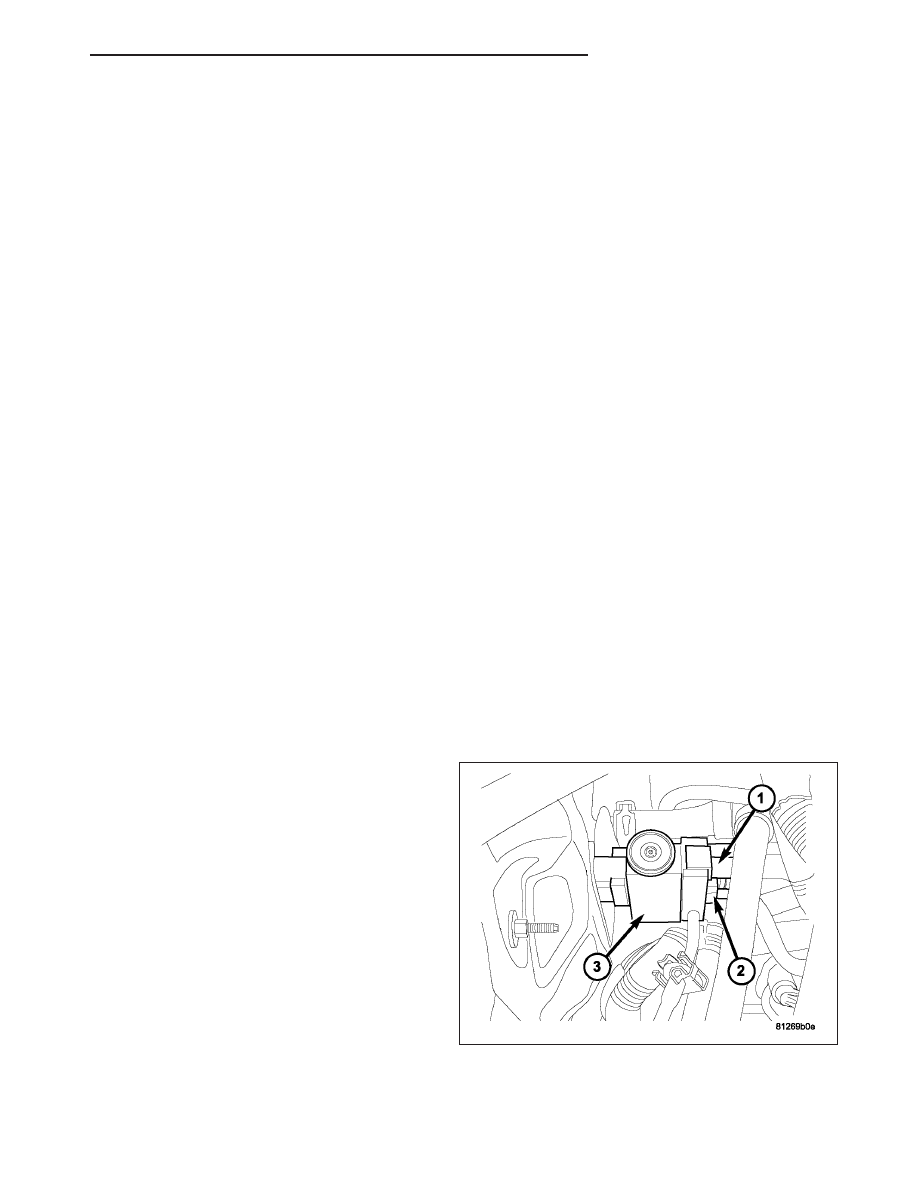Content .. 1566 1567 1568 1569 ..
Dodge Durango (HB). Manual - part 1568

NOTE: Liquid CO
2
is required to test the A/C expansion valve. This material is available from most welding
supply facilities. Liquid CO
2
is also available from companies which service and sell fire extinguishers.
When testing the A/C expansion valve, the work area and the vehicle temperature must be 21° to 27° C (70° to 85°
F). To test the expansion valve:
1. Connect a charging station or manifold gauge set to the refrigerant system service ports. Verify the refrigerant
charge level.
2. Close all doors, windows and vents to the passenger compartment.
3. Set the A/C-heater controls so that the A/C compressor is operating, the temperature control is in the highest
temperature position, the mode-air doors is directing air output to the floor and the blower motor operating is
operating at the highest speed.
4. Start the engine and allow it to idle. After the engine has reached normal operating temperature, allow the pas-
senger compartment to heat up. This will create the need for maximum refrigerant flow into the A/C evaporator.
5. If the refrigerant charge is sufficient, the discharge (high pressure) gauge should read 827 kPa to 1655 kPa (120
psi to 240 psi). The suction (low pressure) gauge should read 207 kPa to 345 kPa (30 psi to 50 psi). If OK, go
to Step 6. If not OK, replace the faulty A/C expansion valve.
WARNING:
Protect the skin and eyes from exposure to liquid CO
2
or personal injury can result.
6. If the suction (low pressure) gauge reads within the specified range, freeze the A/C expansion valve for 30 sec-
onds using liquid CO
2
or another suitable super-cold material.Do not spray R-134a or R-12 refrigerant on the
A/C expansion valve for this test. The suction (low pressure) gauge reading should drop by 69 kPa (10 psi).
If OK, go to Step 7 If not OK, replace the faulty A/C expansion valve.
7. Allow the expansion valve control head to thaw. The suction (low pressure) gauge reading should stabilize at 207
kPa to 345 kPa (30 psi to 50 psi). If not OK, replace the faulty A/C expansion valve.
8. When expansion valve testing is complete, test the overall A/C system performance (Refer to 24 - HEATING &
AIR CONDITIONING - DIAGNOSIS AND TESTING - A/C PERFORMANCE TEST).
REMOVAL
WARNING: Refer to the applicable warnings and cautions for this system before performing the following
operation (Refer to 24 - HEATING & AIR CONDITIONING/PLUMBING - FRONT - WARNINGS) and (Refer to 24
- HEATING & AIR CONDITIONING/PLUMBING - FRONT - CAUTIONS). Failure to follow the warnings and cau-
tions could result in possible personal injury or death.
1. Recover the refrigerant from the refrigerant system
(Refer to 24 - HEATING & AIR CONDITIONING/
PLUMBING - FRONT - STANDARD PROCEDURE
- REFRIGERANT SYSTEM RECOVERY).
2. Disconnect and isolate the negative battery cable.
3. Remove the A/C suction line (1) and the A/C liquid
line (2) from the A/C expansion valve (3) (Refer to
24 - HEATING & AIR CONDITIONING/PLUMBING
- FRONT/LINE-A/C SUCTION - REMOVAL) or
(Refer to 24 - HEATING & AIR CONDITIONING/
PLUMBING
-
FRONT/LINE-A/C
LIQUID
-
REMOVAL).
HB
PLUMBING - FRONT
24 - 465